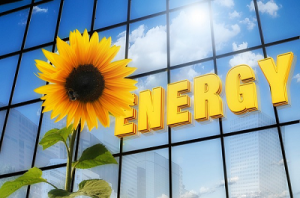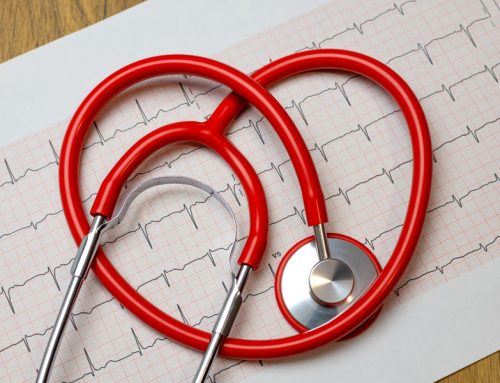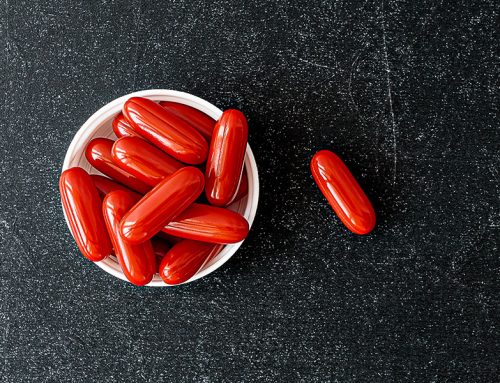
Coenzyme Q10 is necessary for energy production in our cells.
You are on the go most of the time. You burn up a lot of energy in the course of the day. You undoubtedly know that the body produces something called ATP (adenosine triphosphate) in the cells and that it uses the ATP to generate energy. But the cells produce and store only so much ATP. With strenuous exertion, you will soon deplete those stores of ATP.
Okay, so, how does Coenzyme Q10 come into the picture? First of all, Q10 itself is a fat-soluble substance that is synthesized in our bodies in a complicated multi-step process that requires the optimal availability of several vitamins, most notably vitamin B6.
Research studies have shown two things that we need to be aware of: 1) that our production of Q10 declines with advancing age, and 2) that, the older we get, the more difficult it is for us to get enough Q10 in the food we eat.
Q10’s two important functions
Q10 is known to fulfill two vital functions in our cells, especially in our heart muscle cells.
First of all, Q10 boosts energy production. It is necessary for the synthesis of the energy molecule ATP in the mitochondria of our cells. This is very important because ATP is what the cells use when they need energy.
Secondly, Q10 plays an important antioxidant role in the cell membranes and in lipoproteins. As such, it could help to protect us against degenerative diseases.
In this article, we will focus on the role of Q10 in energy production.
Q10’s role in energy production
The basics of energy production are that high-energy glucose molecules react with oxygen molecules to produce the reaction products of carbon dioxide and water and energy.
In effect, the cells take in nutrients (glucose) and push out waste products (carbon dioxide and water), and they produce energy in the form of ATP.
The reason for the cells’ production of energy in this process is that the reaction products CO2 and H2O are much lower-energy molecules than the glucose molecules are.
The four phases of energy production in the cells
There are four phases to the cells’ production of energy in the presence of oxygen (the process is called aerobic respiration).
Phase one is called the glycolysis phase. Glucose molecules are broken down into pyruvate molecules. There is a net yield of two ATP molecules per glucose molecule in this phase.
Phase two is called the preparatory phase. The pyruvate molecules enter the mitochondria and are transformed into acetyl-coenzyme A molecules.
Phase three is the citrus acid cycle (also called the Krebs cycle) phase. Eight different reactions take place in this phase. The intermediate energy molecules NADH and FADH2 are produced. There is a net yield of two ATP molecules per glucose molecule in this phase as well.
Phase four is the electron transport chain phase. In the inner mitochondrial membrane, Q10 molecules accept electrons from the compounds that were generated in the glucose metabolism and that are ready to give up one or two electrons.
Q10 and the electron transfer chain
The Q10 molecules then transfer the electrons to other compounds that are ready to accept electrons. Simultaneously, the Q10 molecules transfer protons outside the inner membrane of the mitochondria. When protons flow back into the interior of the mitochondria, energy is released. That energy is used to form ATP.
The net yield of ATP molecules from a glucose molecule in phase four is 32 or 34, depending on conditions in the inner mitochondrial membrane. Altogether, in the process of cellular respiration, 36 or 38 ATP molecules are produced from a glucose molecule: two from phase one glycolysis, two from the citrus acid cycle in phase three, and 32 or 34 from phase four.
Please understand that the Q10 molecules have to be present for the release of the energy that is needed to produce ATP. Each Q10 molecule is usable multiple times, being reduced and oxidized many times, back and forth, before it falls apart and needs to be replaced.
Because the Q10 molecules will eventually fall apart, we need constantly to synthesize or ingest more Q10 molecules.
Steady demand for Q10
Our bodies store only enough ATP, at any one time, to fuel strenuous exertion for several minutes. So, if we are active, we will be using Q10 more or less steadily to make more ATP. Even at rest, our heart muscle is exerting itself, so we will always be needing more ATP produced.
How efficient are we in the process of energy production? Biology textbooks tell us that about 40% of the energy in a glucose molecule will be transferred to ATP. The rest of the energy from the glucose molecule will be lost as heat energy.
From aerobic to anaerobic energy production
We all know from experience what happens when we over-exert ourselves and cannot get enough oxygen to our cells rapidly enough. Our muscle tissues switch from aerobic energy production to anaerobic energy production, which, for a short period, gives us the energy that we need to continue.
But the lactate that builds up in our muscles during energy production in the absence of oxygen is toxic to our cells, and, when the blood can no longer carry away all of the lactate that builds up, then we begin to become fatigued, and we begin to cramp up.
Anaerobic energy production inefficient
During the period of anaerobic energy production, only two ATP molecules are produced from each glucose molecule. That is an efficiency rate of just over two percent.
So, oxygen is very important to efficient and sustainable energy production.
But, think about it. Those ATP molecules cannot be produced from glucose molecules unless there are Q10 molecules available to do their work in phase four of the process of cellular respiration.
It should be clear that we need to make sure that we have an adequate intake of Q10 with good bio-availability whenever we are exerting ourselves athletically and as we are getting up in age.
But even those of us who are younger or who are inclined to avoid strenuous physical exertion have a heart muscle that is constantly working, and the cells in the heart need energy constantly, and, to get energy from ATP, the cells need Q10.









how to saving the more energy for it?
Hi, Rani,
Because it is a vital co-factor in the cellular production of ATP energy, Coenzyme Q10 is especially important to cells and tissues with high demands for energy.
https://www.ncbi.nlm.nih.gov/pmc/articles/PMC4112525/
Thank you,
Richard